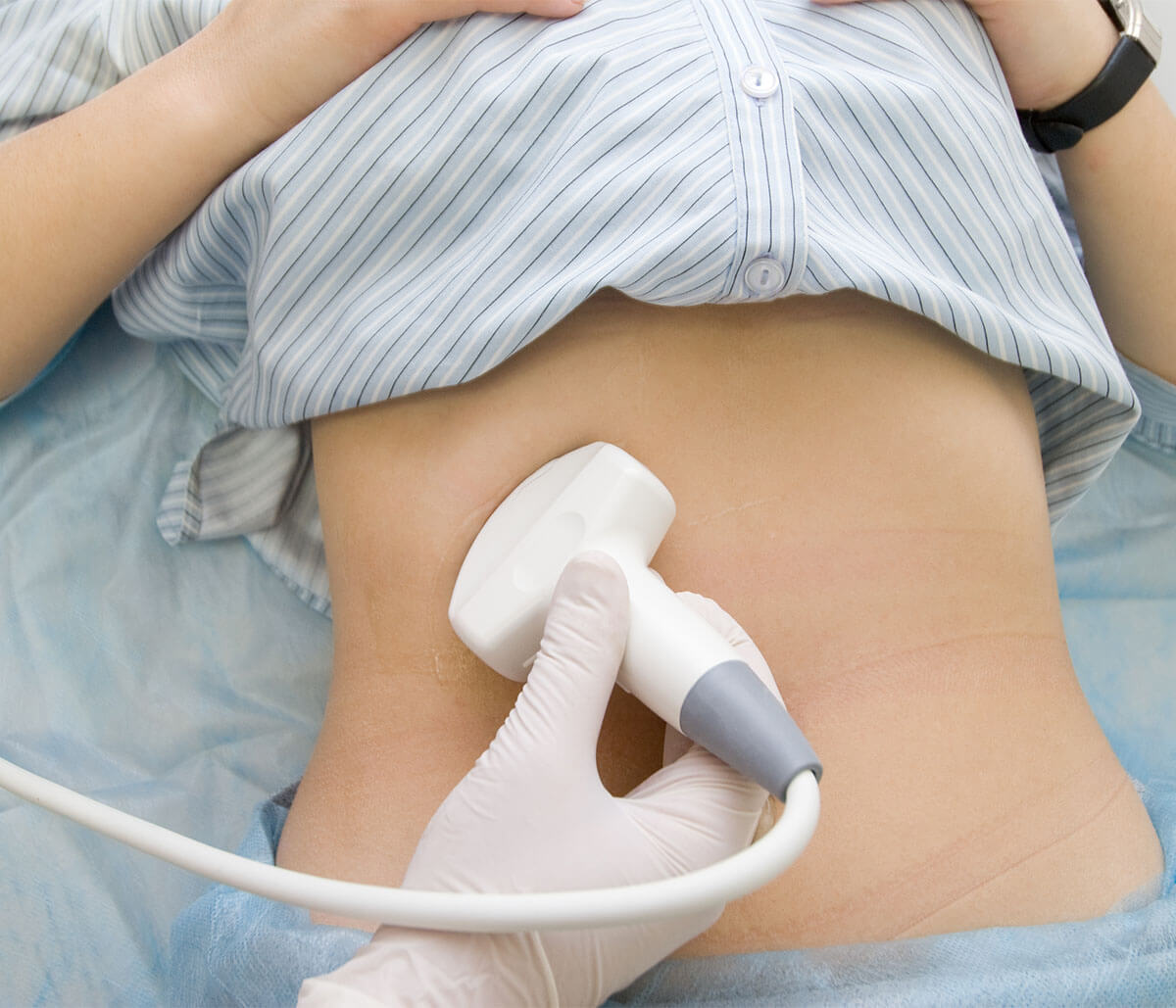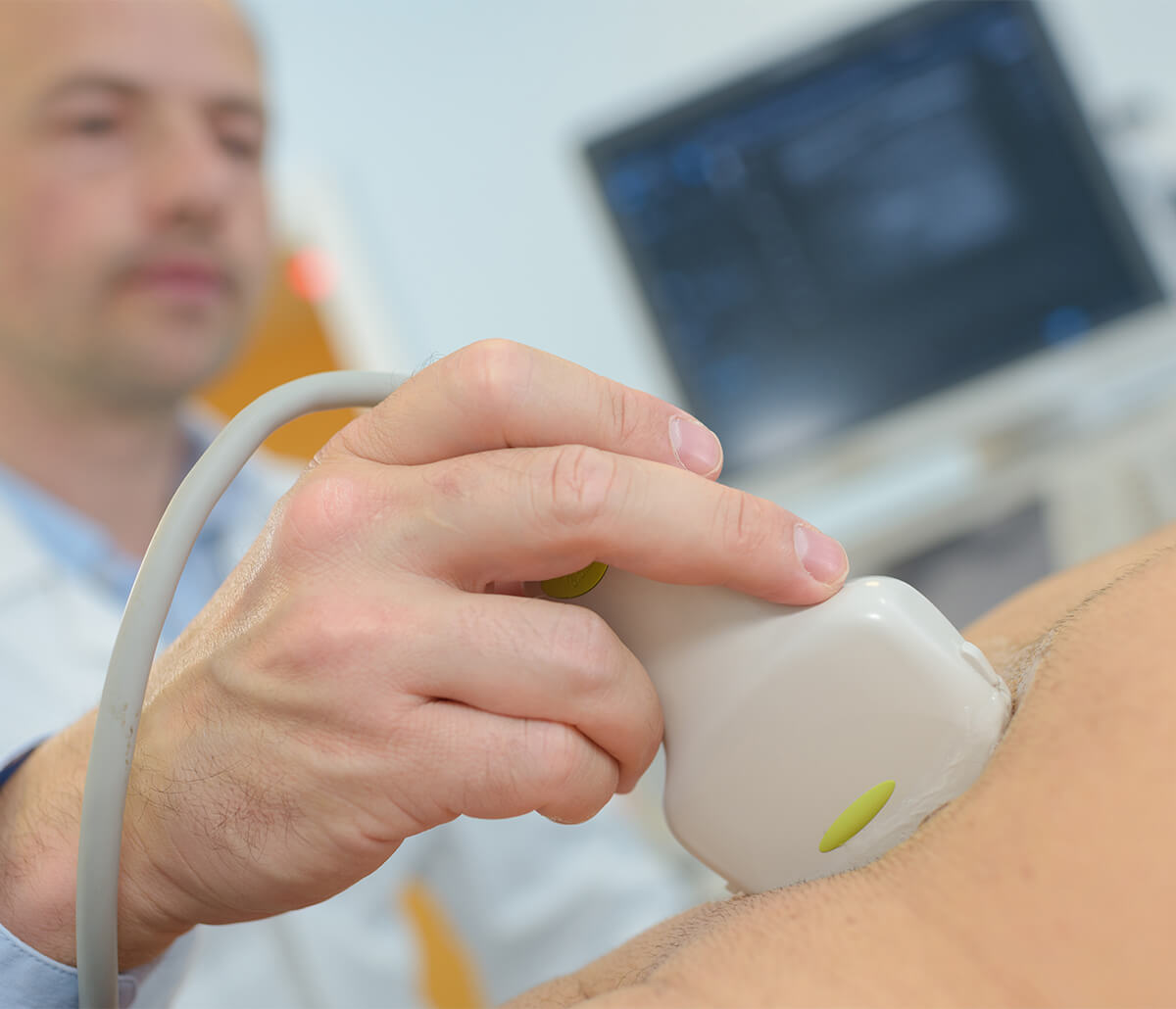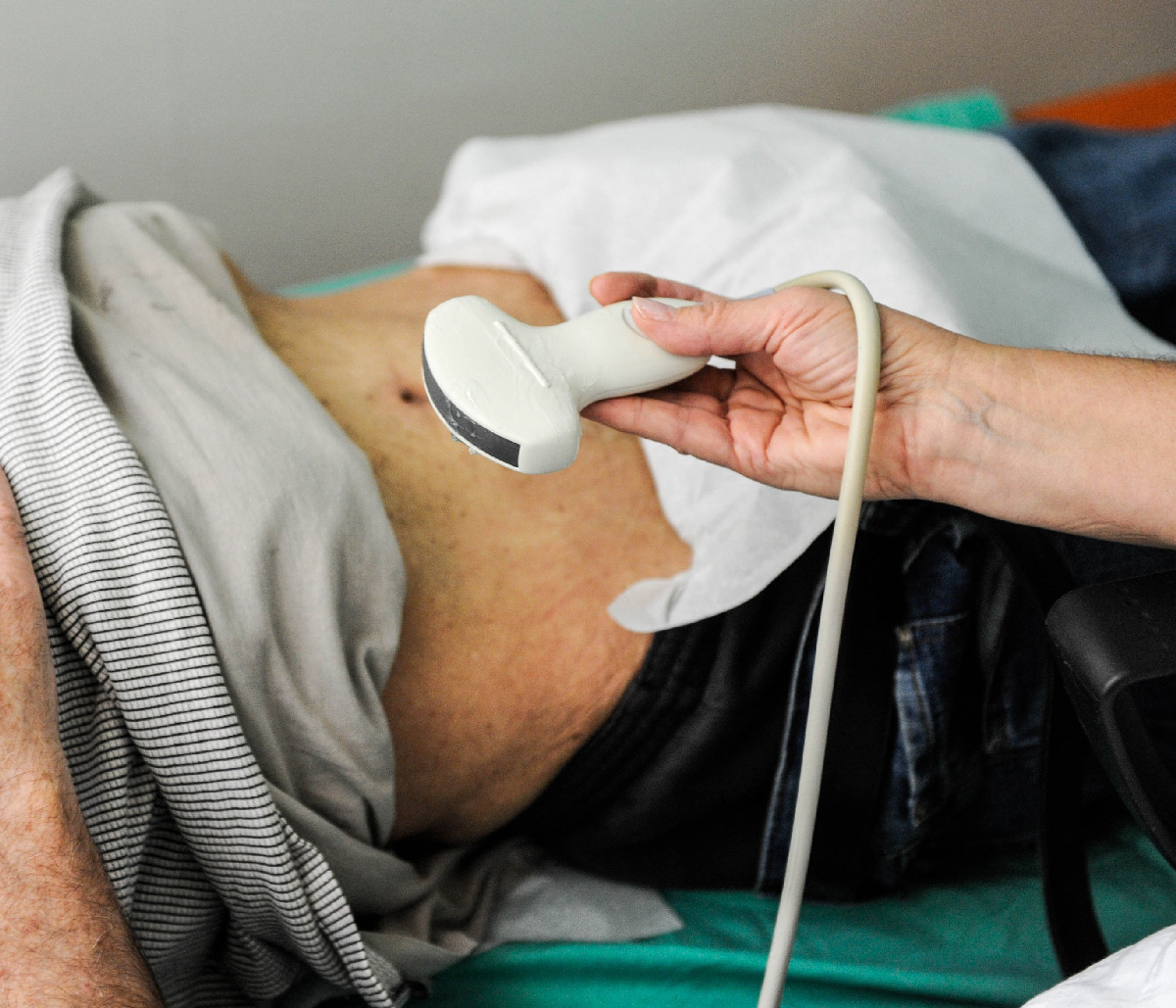Liver fibrosis occurs when your liver becomes full of scar tissue due to diseases such as Hepatitis C or fatty liver, and it is important to know the level of steatosis and fibrosis that has occurred to properly treat these diseases. For many years, patients have needed to undergo an invasive surgical liver biopsy to determine their level of liver fibrosis. Fortunately, with modern technology called Fibroscan, invasive biopsies are no longer necessary and simple sound waves can be used to determine the level of fibrosis. Dr. Alexander Shapsis in Brooklyn, NY uses this knife-free, painless procedure to provide the best treatment for his patients.
How the Fibroscan test works
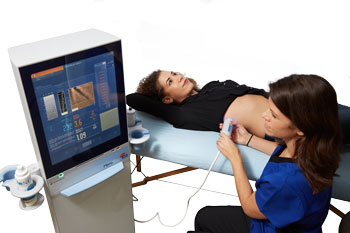
The Fibroscan liver test works by placing a sensor on top of your skin where your liver is located. The sensor transmits low frequency sound waves called “shear waves” through your liver and then determines how fast the sound travels, which is also known as liver elastography. This measurement is then translated into a Fibroscan score that the doctor can use to understand the level of fibrosis, or stiffness, of your liver. The more scarring your liver has, the less elastic it will be.
Fibroscan is not a replacement for a conventional liver ultrasound, so your doctor may also recommend that a liver ultrasound be performed to assess your liver’s structure and overall health.
What to expect during a Fibroscan test
When you are undergoing the procedure, you will not feel any pain. Some patients say that they feel a “flicking” sensation when the vibration waves are passed through the probe, but it is not uncomfortable. The whole procedure usually takes around 10 minutes. Typically, the only preparation that you need to do in advance is to refrain from eating or drinking for two hours before the procedure, but the doctor will provide you with all of the information and instructions that you need to be ready for the test. Eating a large meal before the test may cause your results to show that you have a higher level of fibrosis than you actually do.
After the test, your results will be immediately available, so you don’t have to wait for days or weeks for your results.
Interpreting the result
As cirrhosis progresses and your liver becomes less elastic, it loses more and more of its ability to function. Your Fibroscan score for fatty liver disease, Hepatitis, or other liver diseases will be a number from 2.5 to 12.5 or above. These numeric scores are then translated to a liver fibrosis rating, which will be anywhere from F0 to F4. Lower numbers indicate healthier livers for both your Fibroscan results and your liver fibrosis rating. An example interpretation of your Fibroscan score is below.
Fibroscan score ranges:
- 2.5 – 7.4 = Fibrosis rating F0 or F1, which indicates no or mild fibrosis with no evidence of progressive liver disease
- 7.5 – 9.4 = Fibrosis rating F2, which indicates moderate fibrosis with evidence of progressive liver disease
- 9.5 – 12.4 = Fibrosis rating F3, which indicates severe fibrosis and high risk of progression to cirrhosis
- 12.5 or higher = Fibrosis rating F4, which indicates extensive fibrosis and cirrhosis of the liver

>> Speaker 1: Different patient anatomies. Present variations in the distance to the center of the liver variations that are not always correlated to a patient’s weight or BMI fibro scan is designed to explore a consistent three cubic centimeter volume of liver tissue, irrespective of the patient’s morphology. To accomplish this, FibroScan is equipped with three probes, two for adults, and a pediatric probe each designed to address different patient morphologies. FibroScan offers two adult probe models that accommodate the varying distances from the skin to the center of the liver. In adult patients, which we call skin to capsule distance, the median probe examines a three cubic centimeter cylinder of liver tissue between 25 and 65 millimeters below the surface of the skin. The XL probe examines a three cubic centimeter cylinder of liver tissue between 35 and 75 millimeters below the surface of the skin. The fiber scan probe selection tool will guide the operator in selecting the appropriate adult probe using a skin to capsule distance analysis algorithm. The small S pediatric probe is designed to vary the exam cylinder size and exam cylinder position based on the patient’s thoracic perimeter fiber scan. Adult probes examine a three cubic centimeter cylinder of the patient’s liver. This large examination volume more than 100 times the volume of a biopsy helps to minimize sampling error
>> Speaker 1: Using the correct probe model. Based on the adult patient’s skin to capsule distance is required by the test protocol. FibroScan is powered by vibration controlled transient elastography or VCTE. Here is how this unique method for assessing liver stiffness works. A 50 hertz sheer wave is mechanically induced from the tip of the fiber scan probe to the patient. This feels like a slight flick or tap on the skin. The mechanical sheer wave travels through the liver tissue. The sheer wave’s speed is measured by ultrasound pulses, which reflect off the wave as it passes through the three cubic centimeter exam cylinder. The speed of the shear wave is used to calculate liver stiffness reported in kilo pascals. Here the shear wave moves slowly through a healthy liver In a cirrhotic liver, the shear wave moves very rapidly in to liver stiffness. Fiber scan simultaneously calculates ultrasound attenuation rate within the explored three cubic centimeter volume. This assessment known as controlled attenuation parameter or cap is associated with the extent of fat present in the liver. Tissue ultrasound pulses are generated from the fiber scan probe as fat builds in the liver. The rate of ultrasound signal absorption increases resulting in a higher cap value reported in decibels per meter.
>> Speaker 1: A low attenuation rate is associated with lower levels of fat. A higher attenuation rate is associated with a higher level of fat in the liver tissue.

>> Speaker 1: The following is a demonstration and explanation of what you can expect to experience during a FibroScan examination. The FibroScan operator will have you lie on your back and ask you to raise your right arm behind your head
>> Speaker 1: With your shirt pulled up. To expose your rib cage, allow the operator to correctly locate the FibroScan probe. The painless non-invasive procedure will begin with the probe pressed against your side. FibroScan is able to measure a three cubic centimeter volume of liver tissue. This large examination volume is 100 times the size of a typical liver biopsy and minimizes sampling error. This unique method of assessing liver stiffness uses vibration controlled transient elastography or V-C-T-E-V-C-T-E works by producing a mechanical ShearWave from the tip of the FibroScan probe. During the examination, you’ll feel a slight flick or tap on the skin. This is producing the shear wave that will travel through the liver tissue. The speed is measured by ultrasound pulses, which reflect off the wave as it passes through a part of the liver. The speed of the shear wave is used to calculate liver stiffness in addition to liver stiffness.
>> Speaker 1: FibroScan simultaneously calculates ultrasound attenuation rate in the explored three cubic centimeter volume. This assessment known as controlled attenuation parameter or CAP, is associated with the extent of fat present in liver tissue. As fat builds in the liver, more of the ultrasound signal is absorbed by the fat, thus reducing or attenuating the amount of ultrasound returning to the probe. After applying a water-based gel to the tip of the probe, the operator will position the probe in the space between your ribs. You’ll feel a slight pressure and a slight flick against your skin. When the sheer wave is created, you may feel about 10 flicks on your skin. As part of the examination, FibroScan will record the measurements and the results will be provided to your physician. Your physician will be the one to interpret the data according to your personal medical history as part of an overall assessment of your liver health. Thank you for your participation.
Determining if you are a good candidate for Fibroscan
The Fibroscan test can be used to determine the level of scarring in your liver due to a number of liver diseases, including:
- Hepatitis B or C
- Chronic liver disease
- Fatty liver
- Chronic alcohol abuse
- Primary Biliary Cirrhosis
- Primary Sclerosing Cholangitis
- Autoimmune Hepatitis
- Hemochromatosis
- Wilson’s disease
Studies have shown that Fibroscan is highly accurate and serves as a good tool to determine the level of fibrosis for most patients with chronic liver diseases. It can be used for an initial screening to determine how much liver damage you have, as well as to monitor the progression of disease over time.
Certain conditions such as active inflammation, obstructions, lesions or tumors, or congestion in their liver can result in scores that are artificially high, and patients who are obese, older, have metabolic syndrome, or have ascites may have less reliable results. In some cases, a follow-up biopsy may need to be performed depending on the results of the Fibroscan test, but for most patients, this non-invasive procedure is sufficient and a biopsy is not necessary.
All you need to know about Fibroscan technology explained by Dr. Alexander Shapsis
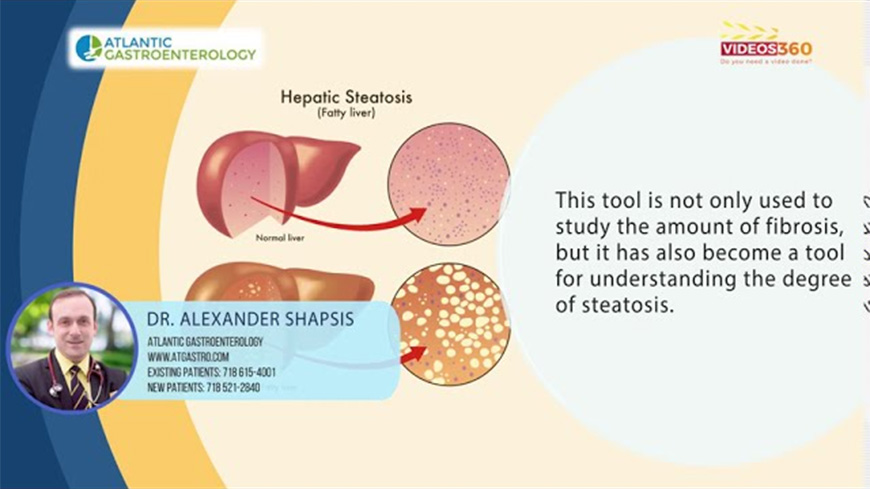
What is a Fibroscan?
Fibroscan is one of the latest technologies which hepatologists and gastroenterologists employ to evaluate the transformation to cirrhosis. Its become an integral tool for hepatologists as part of the evaluation of the liver disease.
What technology does Fibroscan use?
Fibroscans use sound lace technology to detect the amount of elastic tissue.
The more fibrous tissue, or the more scar tissues the liver accumulates, the higher the predictive value of this test.
How important a role does Fibroscan play in identifying liver diseases?
This tool is not only used to study the amount of fibrosis, but it has also become a tool for understanding the degree of steatosis.
Fibroscan allows us to understand how much fat is deposited in the liver with a fair degree of certainty and allows us to intervene on this process early on.
FibroScan – The Consistent, Painless Approach to Liver Management

Atlantic Gastroenterology now offers FibroScan®, an accurate, non-invasive, painless aid for managing patients with liver disease. FibroScan is FDA-approved for clinical management of patients with liver disease and is covered by most insurance carriers.
FibroScan works by emitting a pulse of energy, which you may feel as a slight vibration on your skin. FibroScan then measures the speed of this energy and immediately provides this information to your physician, who then uses it as part of a broader evaluation of your liver health.
FibroScan offers many benefits:
- Consistent results
- The examined area is 100x the size of a needle biopsy
- Covered by most insurance plans
- The procedure is painless and takes about 10 minutes
Dr. Alexander Shapsis is an expert in diagnosing diseases of the liver and using the latest technologies such as Fibroscan to diagnose and treat patients with chronic liver diseases using the most non-invasive, comfortable methods possible. The Atlantic Gastroenterology team is friendly and welcoming, and the office is conveniently located in Brooklyn to serve the greater New York City area. Call 718 521-2840 to schedule your appointment today.





